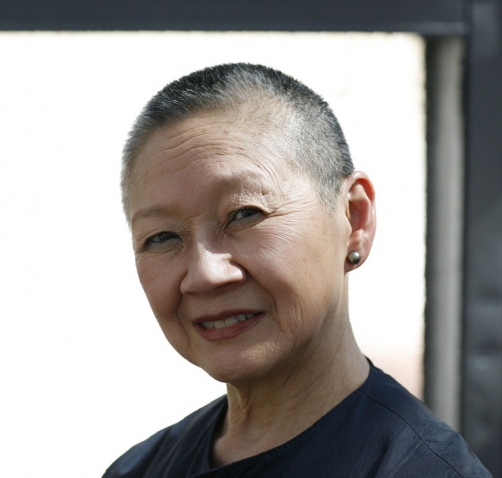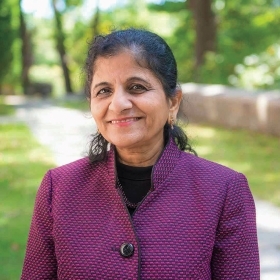How is flower arranging similar to martial arts? Ask Anna Kaku Nakada ’59, who began studying both disciplines in 1990 and now teaches ikebana and holds a black belt in aikido. The common requirements are practice, patience, and above all, humility. “When you enter the classroom, or the dojo, there’s nothing more frightening than thinking, ‘I’m nothing.’ Your ego can’t get in the way,” she says.
For the first dozen years that she was involved with ikebana, Anna says, “I couldn’t stand anything I made. The minute I constructed it, I tore it down.” The driving force behind her dissatisfaction wasn’t perfectionism; it was a need to have the arrangement feel exactly right.
“When you cut a flower and bring it indoors, you have a huge responsibility to do justice to that flower,” she says. “The art of ikebana is to make flowers live: ike means ‘to live,’ bana means ‘flower.’”
Anna began her study of ikebana when she and her husband, Yoshinao, moved from New Jersey to Tokyo for his job. On a whim, she took a beginner’s class at the Ichiyo School of Ikebana, one of the thousands of ikebana schools in Japan. After six years studying with the headmaster, Anna became his teaching assistant and was asked to lead classes of her own. “It was baptism by fire,” she says. “I had to learn quickly and become more serious.”
Anna had never imagined such a career while at Wellesley, where she had taken science courses and majored in biblical history. Her first job was as a laboratory technician at the Massachusetts General Hospital’s Cardiovascular Research Lab, a group studying the effect of hormones on sodium transport through cell membranes replicating the human kidney. The position involved working with radioactive isotopes, so when she became pregnant with her first child, she knew it was time to quit.
Anna went on to raise three children while running organizations and dabbling in politics. After 16 years, she went back to work, obtaining grants for Muhlenberg College in Allentown, Pa., and after moving to New Jersey, she ended up as director of foundation and corporate support for the YMCA of Greater New York. When her husband, who was an engineer at Bell Labs, was tapped to lead a division in Japan, the couple quickly made plans to move to Tokyo. They spent two nearly six-year stints in Japan, before returning to the U.S. for good in 2001.
Anna absorbed the ikebana lessons well. For nearly 30 years, she has been teaching a generation of students the art of Ichiyo ikebana, has exhibited her work, and has been invited to give major solo demonstrations at the Metropolitan Museum of Art and at venues throughout the East Coast, as well as in Guatemala City and Montreal. She has served as international president of Tokyo-based Ikebana International and continues to head the New York/New Jersey chapter of the Ichiyo School of Ikebana.
Anna laughs now when thinking about how her life has evolved. The two things she feared doing all of her life—writing and art—ended up being the most important elements of her career. “There’s no shortcut to either one,” she says. “You put in your time. It’s a discipline.”







We ask that those who engage in Wellesley magazine's online community act with honesty, integrity, and respect. (Remember the honor code, alums?) We reserve the right to remove comments by impersonators or comments that are not civil and relevant to the subject at hand. By posting here, you are permitting Wellesley magazine to edit and republish your comment in all media. Please remember that all posts are public.